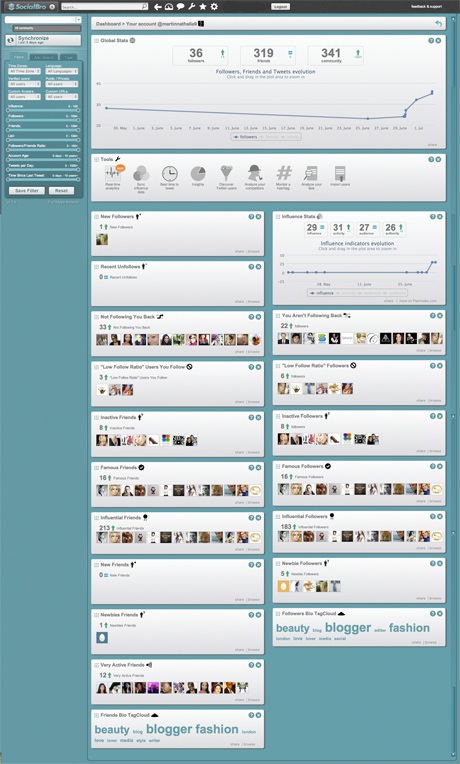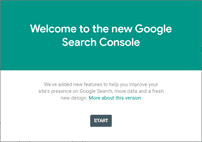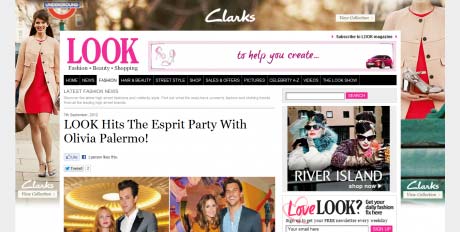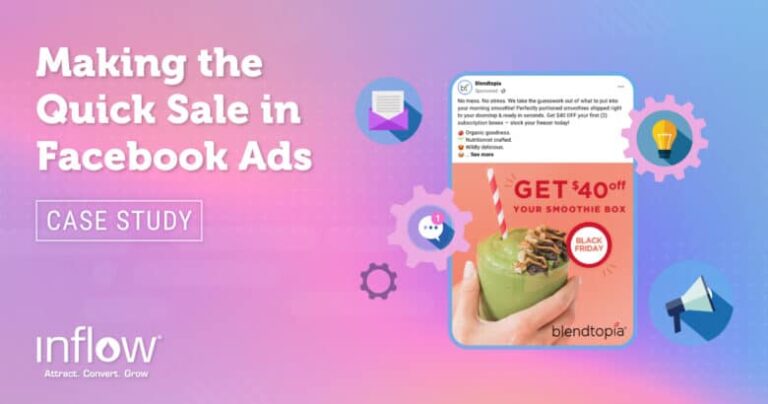If you’re still exclusively relying on high-production-value photos, videos, and designs for your ad creative, you’re getting left behind — and wasting thousands of dollars of your advertising budget.
Why? Because there’s a new boss in town: user-generated content (UGC).
While the use of user-generated content campaigns has been on the rise for years, COVID-19 kicked it into high gear. When the pandemic locked down all in-person photo and video shoots last spring, marketers had to mine from the creative they had (a blissful but irrelevant reminder of the carefree days) or go to the source — employees, customers, and more — for fresh creative that spoke to the times.
And that trend is here to stay.
User-generated content marketing isn’t hard, and we’ve seen it work for our clients time and time again. But, if your business is struggling to adopt it into your strategy, you’re not alone.
In this blog, we’ll help you make the big switch, by explaining:
- What user-generated content is
- Why eCommerce brands struggle to embrace it
- Why UGC actually works (plus some real-life eCommerce examples)
- How to get engaging user-generated content
- And whether it’s right for your business
What is User-Generated Content?
Before we get into the weeds, let’s get one thing straight. As the name implies, user-generated content is any content created by people other than the brand itself. This includes customers, employees, and even those who simply follow or engage with the brand or company.
There’s really no single “definition” for user-generated content. It could be something as simple as a tweet or comment on a social post, or it could be a video filmed by a customer reviewing a product or experience. Your UGC will look unique, depending on how your customers interact with your brand.
Here’s an example from our client Mountain House, who frequently uses UGC in their organic social media strategy:
Why eCommerce Brands Struggle to Embrace UGC
Despite its popularity, user-generated content campaigns can be (and often are) an initial hard sell for eCommerce businesses. There are two main reasons why:
1. Brand Image “Misalignment”
When an eCommerce client of ours balks at incorporating this type of content into their ad campaigns, it’s usually for one reason: They’re concerned about brand image.
Many business owners and marketers invest a great deal of time and money into meticulously planned, highly produced ad creative to sell the story that they want. They worry UGC ads will be seen as unrespectable or amateur.
But here’s the fact: The line between “professional” and “unprofessional” is continuously blurring (Hey, I’m writing this from my home office in my sweatpants). If you only present your brand through high-production-value content, you’re missing opportunities to show the human side of your brand and customers.
2. Unwillingness to Experiment
Other times, brand owners and marketers see using user-generated content as sacrificing quality — and, therefore, not worth the time to test when their current creative is working well.
But, for many brands, these campaigns perform just as well as high-production-value content campaigns. Often, they perform even better.
The digital space is always changing, and rigidity in your ad creative will leave you behind. There’s a reason why we’re all about testing here at Inflow: It’s the only way for your digital marketing strategy to improve.
Why It Works: The Benefits of User-Generated Content
Whether you use it in your own ad campaigns or not, user-generated content for your brand exists. It’s how your brand performs in the wild, but it doesn’t have to be an uncontrollable asset (I’ll get more into that later).
When you embrace user-generated content ads for social, you reap five important benefits.
1. It’s Authentic, Convincing Ad Creative
Customers are tired of the constant barrage of ads. They’re tired of being sold to, and they’re tired of being lied to. If your social ad creative sells a reality that doesn’t exist (for example, clothing modeled only by thin, white women who look nothing like the average American), why would your customers want to buy your product?
User-generated content, on the other hand, instantly connects a customer to your brand and product. They can see someone who looks like them, someone who shares their pain points and desires — and they’re more likely to make the final conversion.
For today’s consumers, relatability in advertising is nearly two times as important as popularity. And, while the “relatability” of social influencers can be debated all day long, they are more effective than your brand at sharing your message. Influencers earn sales, trust, and advocacy, and 63% of consumers trust influencers more than a brand.
(Note: You don’t have to shell out for an influencer partnership to take advantage of UGC. The everyday Joe or Jill is often just as effective.)
Less “Look how cool this brand is!”; more “Here’s what people like you have to say.”
2. It Fits Seamlessly Into the Browsing Experience
Consumers (especially Millennials and Generation Z) have a short attention span, and they’ve learned to tune out ads. If your social ad creative looks and feels like a professional ad, it’s likely to be overlooked.
UGC campaigns mimic the content posted by a user’s friends and family. It fits into their social browsing experience seamlessly, and that means customers are more likely to consider your ad.
3. It Proves Product Value
Customers are increasingly price-conscientious. Convincing them to buy a high-end product during a pandemic is tricky, but user-generated content can be the way to go.
One of our clients, Vitrazza, sells high-end glass chair mats for home offices and other spaces. The price can be a hard swallow for most customers. So, we let customers like them do the convincing.
We’ve written at length about how we tested high-production-value content vs low-production-value content in Vitrazza’s ad creative. You can read more about that in our case study, but here’s the gist: Low-production-value content (including UGC) consistently won by a landslide in performance and results.
We focused on Vitrazza’s user-generated content campaigns on video, asking consumers to review their glass chair mats from their home offices. In very little time, the campaigns generated 4.2x ROAS, outperforming the previous brand creative.
The success wasn’t really a surprise. We knew 66% of people trust consumer opinions posted online, and 69% take action from consumer opinions — the highest engagement level among consumers.
If your product is a pricey sell, hearing that it’s worth it from other customers can make all the difference.
4. It Can Lead to Better ROI
In some cases, these campaigns just make sense from a financial standpoint. High-production photo and video shoots can cost a lot of money; UGC can cost very little or be completely free.
If you don’t have a lot of money for your marketing budget, it may be best spent incentivizing users to send in their own reviews, videos, and pictures. Many customers write reviews anyway, so you’re just taking advantage of that existing process.
Here’s an example. One of our clients sells a menagerie of paper and home goods. But, with products like $10 pens and $13 socks, their customers’ average order value is pretty low. Sinking money into professional ad shoots simply won’t provide the return on investment (ROI) they need to grow.
If your brand is in a similar situation, UGC ads for social media channels may be your smartest investment.
5. It Expands Audience Base
We’ve mentioned how customers want to see people like them in advertising creative. If you’re segmenting your audiences, you tap into user-generated content to meet that customer desire.
Our client Cardboard Cutout Standees runs almost their entire social ad campaigns with this type of content. They sell cardboard cutouts of anything you can imagine, and customers are always excited to post images of themselves with their purchases.
The brand has a surplus of UGC to use, but to expand their audience, we design their campaigns with an eye to diversity. The more potential customers see someone like them purchasing the product, the more motivated they are to investigate a product they previously had no interest in.
By reflecting certain audience segments in our paid advertising, we’ve expanded Cardboard Cutout Standees’ audience base. We scaled the account’s growth by more than $125,000 with UGC ads alone and exceeded the ROAS goal at 3.2.
5 Tips for Success
The barrier to user-generated content marketing is not as high as you think. It can be as simple or as complicated as you make it. When you do it right, it works.
But, how do you get started?
1. First, identify your favorite brands. (They don’t have to be in your vertical.) Think about what kind of UGC campaigns they are running. What do you like about them? What do you think your brand could do better? When we ask our clients these questions, we get a better idea of what UGC campaigns may be a safer sell — not just to customers but to brand advocates and internal stakeholders.
2. Next, give your users basic parameters. User-generated content doesn’t have to be perfect; that’s what editors are for. But, you still want to make sure the basics are there, like good natural lighting, high-quality photos, horizontal video, video length, etc. Ask your users to be clear and concise with their wording; explicit endorsement language in UGC is more persuasive and will increase purchase intent.
3. Incentivize your customers. If you’re struggling to get quality UGC, motivate your consumers with gift cards, discounts, giveaways and more. Reviews are incredibly popular, influence buying decisions, and are easy to do. You can use email marketing to follow up with purchasers in a “Thank You” email. About a week after the product is delivered, ask about their experience, encourage them to share their photos on social , and remind them to submit a review in return for a coupon code or other benefit.
4. Use what you have. Don’t be afraid to repurpose UGC and influencer content from TikTok, Reels, Instagram, and more. If you aren’t already, encourage your customers to share their photos and their experiences on their own social media accounts. Establish a branded hashtag, and see how your consumers respond. Remember: Always give credit to the consumer whose content you use.
5. Analyze your campaign data. Profitability is a key indicator of performance. Look at ROAS and other metrics to evaluate how UGC resonates with your target audience. Adjust your ad creative based on what performs best, and brainstorm on similar approaches moving forward. Some brands do well with a majority UGC, while others do best with an even mix. You won’t know until you try.
And Things Not to Do
There’s one major rule with user-generated content ads: Don’t tell your users what to say.
Remember what we said about authenticity? Your customers will know when this type of content involves a script. Instead, trust your users to use the phrasing and pain points most applicable to your audience. Ultimately, you have the final call in whether or not to use their submission.
Should This Be Your Long-Term Strategy?
Every brand is different. We can’t tell you which ad creative will perform best for your paid social campaigns. You just have to test it.
We recommend every eCommerce brand experiment with user-generated content ads at least once (and preferably several times). Compare your UGC campaign data to the campaign data from your high-production-value content. The answer will often be obvious. If your new ads are performing well and generating a high click-through rate, it’s a good idea to keep going. Over time, this can reduce your cost-per-click.
It can also give you better opportunities to scale your work. Growing your campaigns takes a lot of creative, and churning out high-production-value content to keep up with growth quickly becomes costly. Content from your customers gives you more ad creative options to choose from and, in turn, can make your scaling efforts more cost-effective.
If you’re in a saturated vertical and struggling to compete with your competitors’ deeper pockets, user-generated content campaigns can even the playing field. You don’t have to have a large budget to play the UGC game — just creativity and a willingness to experiment.
All that said, this approach does require strategy, thought, and time. It’s not just a holdover until you can get back to pre-COVID photo and video shoots. If you’re struggling to develop that strategy, bringing on an experienced paid social strategist can help.
Kick Off Your UGC Ads Campaign Now
If you’re still relying on high-production-value photos, videos, and designs for your ad creative, you’re getting left behind — and losing out on a huge opportunity to connect with your customers. Fortunately, user-generated content is an easy and effective way to reach an audience craving relatable, authentic messaging from the brands they follow.
With such a low investment, UGC ad creative is worth the experimentation. Give it a try, and see how it performs against your current content. You may be surprised at the results you see.
Want some experienced hands to get your user-generated content campaigns off the ground? Request a free proposal from our paid social strategists anytime to see what UGC could do for your brand.






